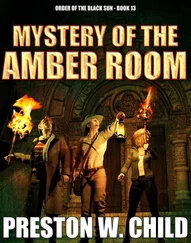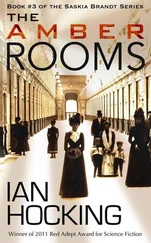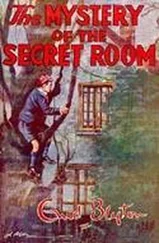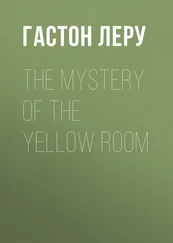She realized the significance.
"I don't understand this obsession of Franz's," Loring said. "So many things waiting to be found. Bellini's Madonna and Child , gone since the war. What a find that would be. Van Eyck's altarpiece of the Mystical Lamb. The twelve old masters stolen from the Treves Museum in '68. And those impressionist works stolen in Florence. There are not even any photos of those for identification purposes. Anyone would love to acquire just one of them."
"But the Amber Room is at the top of everyone's collection list," she said.
"Quite right, and that seems to be the problem."
"You think Christian will try to find Borya?"
"Without a doubt. Borya and Chapaev are the only two searchers left alive. Knoll never found Chapaev five years ago. He's probably hoping Borya knows Chapaev's whereabouts. Fellner would love the Amber Room to be Monika's first unveiling. There is no doubt in my mind that Franz will send Knoll to America, at least to try to find Borya."
"But shouldn't that be a dead end?"
"Exactly. Literally. But only if necessary. Let's hope Borya still has a tight lip. Maybe the old man finally died. He has to be approaching ninety. Go to Georgia, but stay out of the way unless forced to act."
A thrill ran through her. How wonderful to battle Knoll again. Their last encounter in France had been invigorating, the sex afterwards memorable. He was a worthy opponent. But dangerous. Which made the adventure that much more exciting.
"Careful with Christian, my dear. Not too close. You may have to do some unpleasant things. Leave him to Monika. They deserve one another."
She pecked the old man on the cheek with a soft kiss. "Not to worry. Your draha will not let you down."
THIRTEEN
Atlanta, Georgia
Saturday, May 10, 6:50 p.m.
Karol Borya settled into the chaise longue and read again the one article he always consulted when he needed to remember details. It was from the International Art Review , October 1972. He'd found it on one of his regular forays downtown to the library at Georgia State University. Outside of Germany and Russia, the media had shown little interest in the Amber Room. Fewer than two dozen English accounts had been printed since the war, most rehashes of historical facts or a pondering on the latest theory on what might have happened. He loved how the article began, a quote from Robert Browning, still underlined in blue ink from his first reading: Suddenly, as rare things will, it vanished .
That observation was particularly relevant to the Amber Room. Unseen since 1945, its history was littered with political turmoil and marked by death and intrigue.
The idea came from Frederick I of Prussia, a complicated man who traded his precious vote as an elector of the Holy Roman Emperor to secure a hereditary kingship of his own. In 1701, he commissioned panels of amber for a study in his Charlottenburg palace. Frederick amused himself daily with amber chessmen, candlesticks, and chandeliers. He quaffed beer from amber tankards and smoked from pipes fitted with amber mouthpieces. Why not a study faced ceiling to floor with carved amber paneling? So he charged his court architect, Andreas Schulter, with the task of creating such a marvel.
The original commission was granted to Gottfried Wolffram, but in 1707, Ernst Schact and Gottfried Turau replaced the Dane. Over four years Schact and Turau labored, meticulously searching the Baltic coast for jewel-grade amber. The area had for centuries yielded tons of the substance, so much that Frederick trained whole details of soldiers in its gathering. Eventually, each rough chunk was sliced to no more than five millimeters thick, polished, and heated to change its color. The pieces were then fitted jigsaw style into mosaic panels of floral scrollwork, busts, and heraldic symbols. Each panel included a relief of the Prussian coat of arms, a crowned eagle in profile, and was backed in silver to enhance its brilliance.
The room was partially completed in 1712, when Peter the Great of Russia visited and admired the workmanship. A year later Frederick I died and was succeeded by his son, Frederick William I. As sons sometimes do, Frederick William hated everything his father loved. Harboring no desire to spend any more crown money on his father's caprice, he ordered the amber panels dismantled and packed away.
In 1716, Frederick William signed a Russian-Prussian alliance with Peter the Great against Sweden. To commemorate the treaty, the amber panels were ceremonially presented to Peter and transported to St. Petersburg the following January. Peter, more concerned with building the Russian Navy than with collecting art, simply stored them away. But, in gratitude, he reciprocated the gift with 248 soldiers, a lathe, and a wine cup he crafted himself. Included among the soldiers were fifty-five of his tallest guardsmen, this in recognition of the Prussian king's passion for tall warriors.
Thirty years passed until Empress Elizabeth, Peter's daughter, asked Rastrelli, her court architect, to display the panels in a study at the Winter Place in St. Petersburg. In 1755 Elizabeth ordered them carried to the summer palace in Tsarskoe Selo, thirty miles south of St. Petersburg, and installed in what came to be known as the Catherine Palace.
It was there that the Amber Room was perfected.
Over the next twenty years, forty-eight square meters of additional amber panels, most emblazoned with the Romanov crest and elaborate decorations, were added to the original thirty-six square meters, the additions necessary since the thirty-foot walls in the Catherine Palace towered over the original room the amber had graced. The Prussian king even contributed to the creation, sending another panel, this one with a bas-relief of the two-headed eagle of the Russian Tsars. Eighty-six square meters of amber were eventually crafted, the finished walls dotted with fanciful figurines, floral garlands, tulips, roses, seashells, monograms, and rocaille, all in glittering shades of brown, red, yellow, and orange. Rastrelli framed each panel in a cartouche of boiserie, Louis Quinze style, separating them vertically by pairs of narrow mirrored pilasters adorned with bronze candelabra, everything gilded to blend with the amber.
The centers of four panels were dotted with exquisite Florentine mosaics fashioned from polished jasper and agate and framed in gilded bronze. A ceiling mural was added, along with an intricate parquet floor of inlaid oak, maple, sandalwood, rosewood, walnut, and mahogany, itself as magnificent as the surrounding walls.
Five Konigsberg masters labored until 1770, when the room was declared finished. Empress Elizabeth was so delighted that she routinely used the space to impress foreign ambassadors. It also served as a kunstkammer , a cabinet of curiosities for her and later Tsars, the place where royal treasures could be displayed. By 1765, seventy amber objects--chests, candlesticks, snuffboxes, saucers, knives, forks, crucifixes, and tabernacles--graced the room. In 1780, a corner table of encrusted amber was added. The last decoration came in 1913, an amber crown on a pillow, the piece purchased by Tsar Nicholas II.
Incredibly, the panels survived 170 years and the Bolshevik Revolution intact. Restorations were done in 1760, 1810, 1830, 1870, 1918, 1935, and 1938. An extensive restoration was planned in the 1940s, but on June 22, 1941, German troops invaded the Soviet Union. By July 14, Hitler's army had taken Belarus, most of Latvia, Lithuania, and the Ukraine, reaching the Liga River less than a hundred miles from Leningrad. On September 17, Nazi troops took Tsarskoe Selo and the palaces in and around it, including the Catherine Palace, which had become a state museum under the Communists.
Читать дальше












